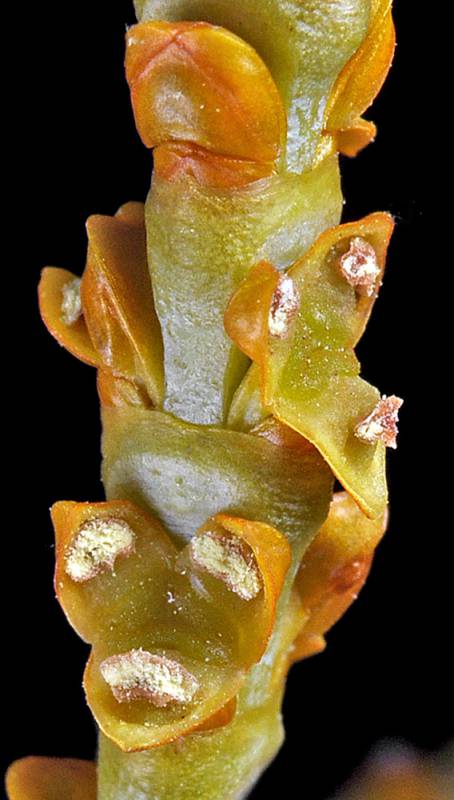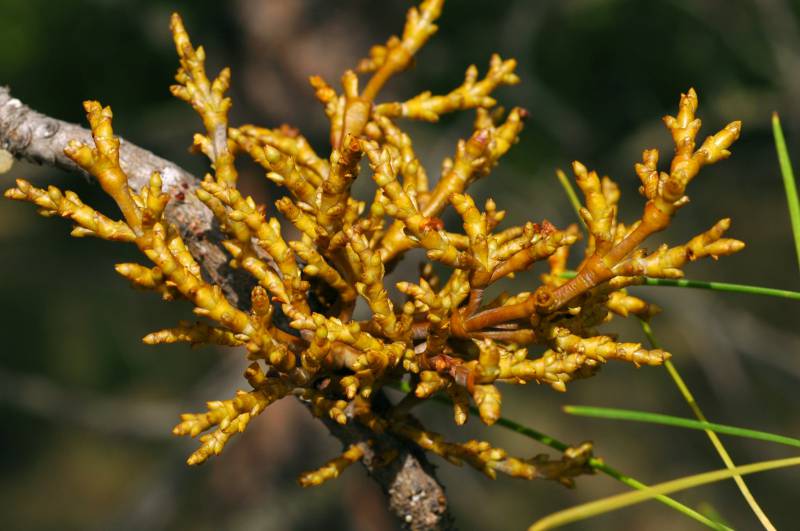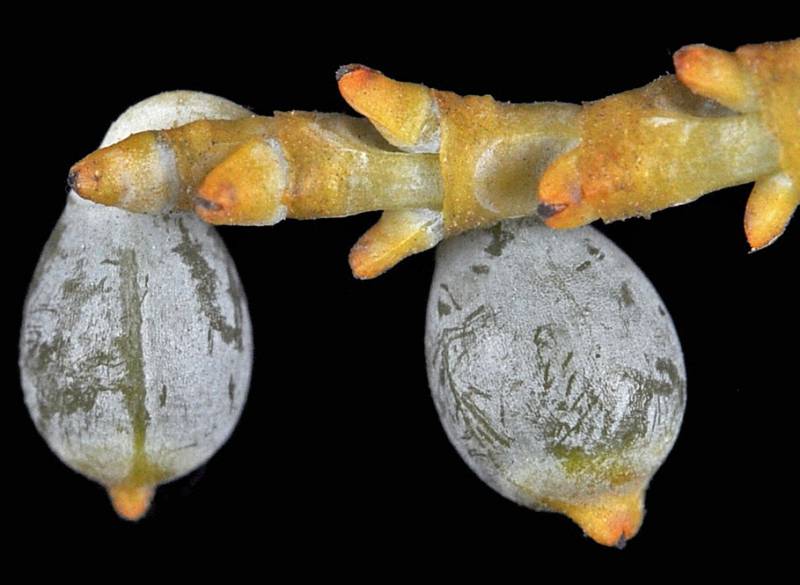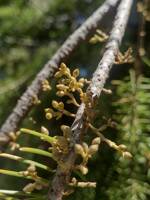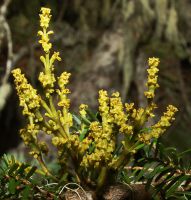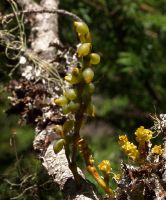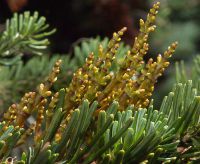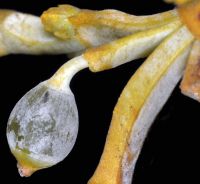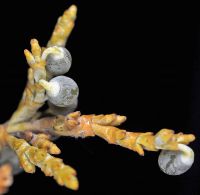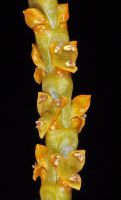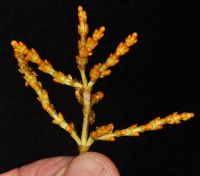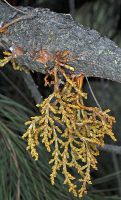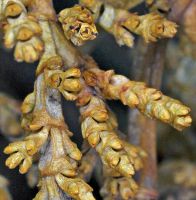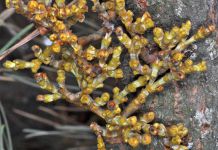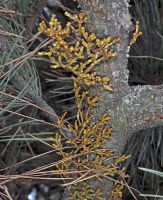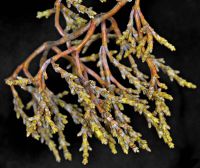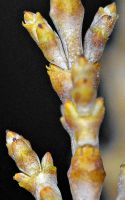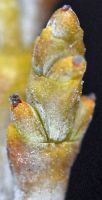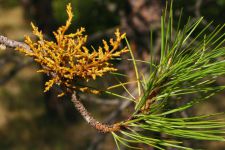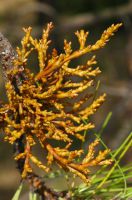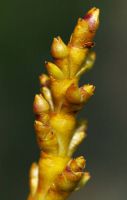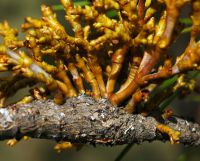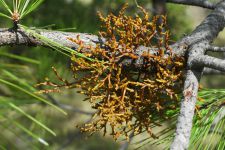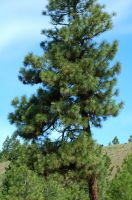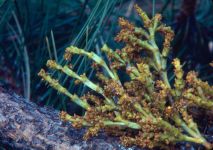Distribution: Occurring chiefly east of the Cascades crest in Washington; eastern Washington to California, east to northern and central Idaho.
Habitat: Parasitic primarily on Pinus ponderosa, occasionally on adjacent P. contorta vars. latifolia and murrayana and rarely on P. lambertiana, not known on Tsuga or Larix;
Flowers: June-September
Origin: Native
Growth Duration: Perennial
Conservation Status: Not of concern
Small, glabrous, monoecious shrubs parasitic on the branches of conifers, the stems orange-yellow to brownish, 3-15 cm. long, much-branched, the segments 1-2 mm. thick and 5- to 10-times as long; accessory branches, if any, in one plane, the branches at each node fan-like.
Leaves none, reduced to small, opposite scales.
Staminate flowers paired at each node, sessile, 2.5-3 mm. broad, yellow or orange to green, the perianth parts 3 or 4, fleshy, each bearing a sessile anther; pistillate flowers 1-2 per node, sessile or with a pedicle 1 mm. long; ovary inferior; perianth parts 2, erect; style lacking; stigma 1.
Berry ovoid, 3-5 mm. long, 1-seeded, the seed ultimately explosively expelled and tending to stick to the surface on which it lands.
Publication: Boston J. Nat. Hist. 6(2): 214, adnot. 1850.
Arceuthobium campylopodum Engelmann ssp. campylopodum [FNA]
PNW Herbaria: Specimen records of Arceuthobium campylopodum in the Consortium of Pacific Northwest Herbaria database
WA Flora Checklist: Arceuthobium campylopodum checklist entry
OregonFlora: Arceuthobium campylopodum information
E-Flora BC: Arceuthobium campylopodum atlas page
CalPhotos: Arceuthobium campylopodum photos

